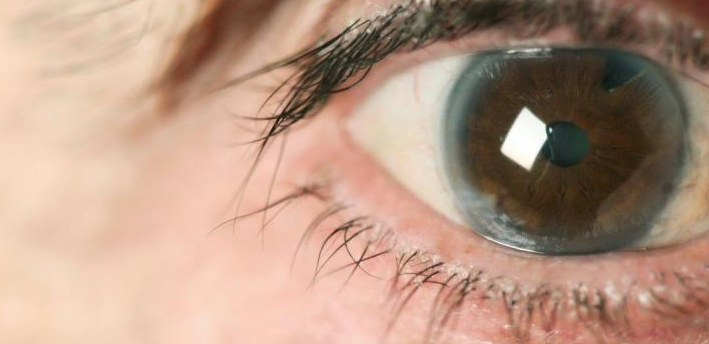EYE HEALTH & SAFETY
Cataracts

Cataracts are the result of the normally clear lens in your eye becoming cloudy. Cataracts happen to almost everyone as they age, however there are many treatments available and they can even result in improved quality of vision. Symptoms of cataracts include, cloudy or hazy vision. It may feel as if there is a film covering your eye, but repeated blinking does not make it go away. A full eye exam with an optometrist can determine if you have cataracts.
Symptoms of Cataracts
- Is your vision blurry or foggy?
- Do you have decreased night vision or see halos around lights?
- Do colours appear dull or muted?
- Are your glasses no longer working?
- Does sunlight or other light seem overly bright or glaring?
Prevention
At this time, no one knows how to prevent cataracts. You can protect your eyes by wearing sunglasses that protect from UV rays and by seeking a diet rich in antioxidants. While these activities will not prevent cataracts, they can slow their growth.
Foods Rich in antioxidants include:
- Small red beans
- Blueberries
- Pecans
- Red berries like cranberries, strawberries and raspberries
- Prunes
- Apples - Red delicious, Granny Smith and Gala
- Artichokes
- Dark green veggies like kale and broccoli
Treatment
In the early stages of a cataract, where vision is minimally affected, your doctor of optometry can sometimes prescribe new lenses for your glasses to give you the sharpest vision possible. When the cataracts start to interfere with your daily activities and glasses cannot improve this vision, your optometrist will refer you to an ophthalmologist (eye surgeon) who may recommend the surgical removal of the cataracts.
Your doctor of optometry provides referrals to secondary specialists, such as ophthalmologists, for treatment of systemic diseases or eye surgery when necessary. Optometrists also co-manage the treatment of ocular diseases and pre- and post-surgical patient care with ophthalmologists.
Cataract surgery is a very safe and effective procedure to remove the cloudy crystalline lens from the eye and replace it with a clear implant. However, there are risks and limitations that need to be discussed with a Doctor of Optometry or ophthalmologist prior to undergoing the procedure. With improved technology, options now exist when it comes to selecting the proper lens implant for your eyes.
When the normally clear lens within your eye becomes cloudy and opaque, it is called a cataract. Cataracts vary from extremely small areas of cloudiness to large opaque areas that cause a noticeable reduction in vision.
Cataracts are a function of aging and are most often found in people over the age of 60, although cataracts are also occasionally found in younger people. If a child is born with a cataract it is referred to as a congenital cataract.
Some indications that a cataract may be forming include blurred or hazy vision that cannot be corrected by changing the glasses prescription, or the feeling of having a film over the eyes that does not go away with blinking. A temporary change in distance and/or near vision may also occur. An increased sensitivity to glare, especially at night, may be experienced. Cataracts develop without pain or redness.
A comprehensive eye examination by a Doctor of Optometry can determine if you have a cataract forming. Cataracts may develop slowly over many years or they may form rapidly in a matter of months. Some cataracts never progress to the point that they need to be removed. When a change in glasses can no longer provide functional vision and the cataract is starting to interfere with your daily activities, your doctor of optometry will arrange a consultation with a cataract surgeon.
During cataract surgery, the old cloudy lens is removed and an intraocular lens implants, inserted in your eye at the time of surgery, serve as a new lens. Sometimes the lens implant can give you good enough distance vision that you may not need glasses. Your near vision will still be blurred however, so you will likely still require glasses to read. Your optometrist will prescribe new lenses for your glasses about four weeks after surgery to maximize your distance and near vision.

